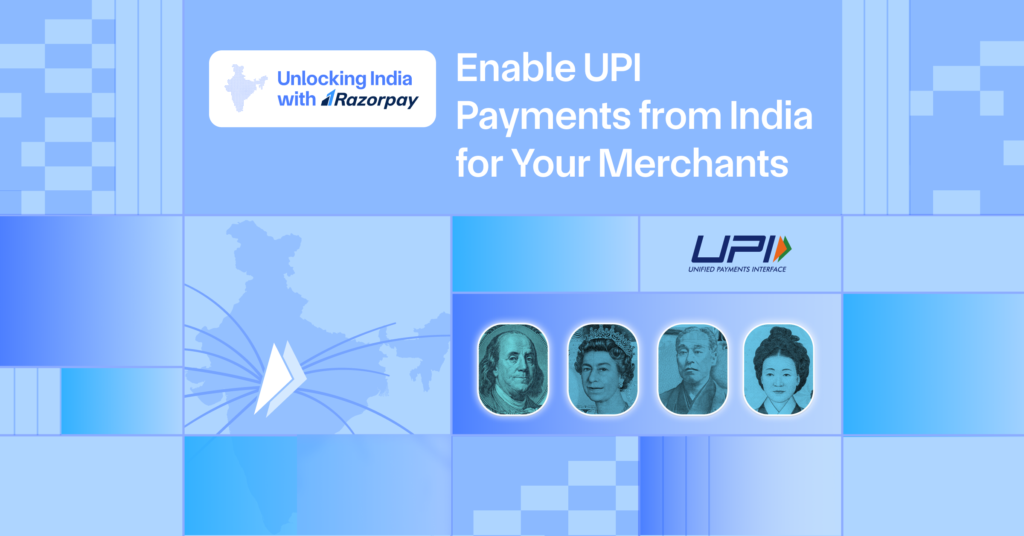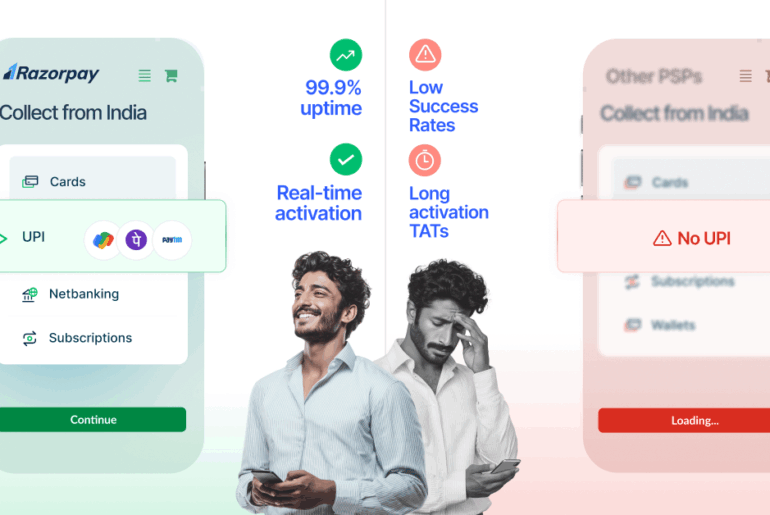India is one of the fastest-growing digital economies in the world. With over a billion people online and a rapidly evolving payments ecosystem, UPI has become the default way to pay – powering everything from daily essentials to big-ticket purchases.
Whether it’s buying groceries or paying for an OTT subscription, Indian consumers overwhelmingly choose UPI. To put things into perspective, UPI now accounts for over 75% of all retail digital payments in the country!
And this is why most global merchants are still struggling to tap into this massive user base. Most rely on international cards or wallets, which only scratch the surface of what Indian customers use day-to-day.
Facilitating UPI isn’t straightforward either as it typically requires setting up a local entity, navigating complex regulations, and building banking partnerships from scratch.
So how can global payment aggregators solve this problem for their merchants and help them unlock India’s potential? Let’s discuss.
First, let’s look at what makes accepting local payments in India so complex in the first place.
The Challenge: Accepting Local Payments in India Isn’t Easy
On paper, tapping into the Indian market seems like a no-brainer – it’s large, digital-first, and growing rapidly. But enabling UPI comes with some roadblocks and quite a bit of friction. Here’s why:
- You need a local entity: Regulatory norms in India often require payment providers to have a local presence to offer domestic payment methods like UPI.
- Compliance is complex: From RBI guidelines to data localisation requirements, there’s a long list of regulatory boxes to check.
- Banking integrations take time: Building direct relationships with Indian banks or payment networks can take months – if not longer.
- Ongoing maintenance: Even after setup, staying compliant and operational means constant oversight, audits, and updates.
As you can see, enabling UPI isn’t just a technical integration – it requires navigating regulation, infrastructure, and ongoing compliance. But what if your merchants could accept UPI payments, set up subscriptions, and get settled in their home currency – all without setting up a local entity?
That’s exactly what Razorpay’s Import Flow enables.
The Solution: Unlock UPI Access with Razorpay Import Flow
Razorpay’s Import Flow is built to solve exactly this challenge – helping global payment aggregators enable local Indian payment methods like UPI, netbanking, and domestic cards for their merchants, without needing a local entity in India.
Here’s how it works:
- We act as the Merchant of Record (MoR) in India, handling all local compliance, banking relationships, and regulatory requirements on your behalf.
- You plug into Razorpay’s infrastructure, and in turn, your merchants get access to India’s most preferred payment methods — UPI, netbanking, and more.
- You receive settlements in your currency, without worrying about forex regulations or setting up an Indian bank account.
And all of this comes with:
- Industry-best success rates
- Support for recurring payments and subscriptions
- End-to-end compliance and reconciliation handled for you
In short, we take care of the complexity so you can focus on scaling your platform and helping your merchants grow in India – without roadblocks.
Let’s Unlock India Together
India is no longer a “future opportunity” – it’s a thriving, digital-first market that’s ready right now. And UPI is the key to unlocking it.
With Razorpay Import Flow, you can help your merchants reach millions of Indian customers, offer the payment methods they actually use, and do it all without the burden of setting up locally.



